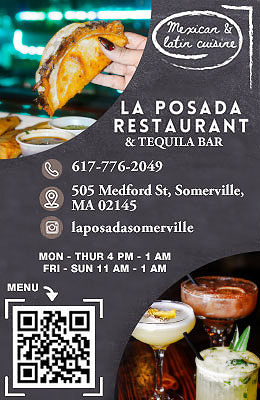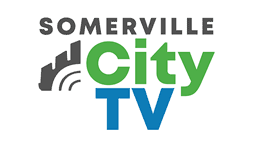After almost ten prize-winning years, the gain and loss of millions of dollars, and a memorable last-ditch effort at survival that brought Bruce Springsteen to the Somerville Theatre, the lights in DoubleTake Magazine’s offices above the Someday Café in Davis Square have finally darkened.
“It’s always difficult for a magazine like DoubleTake to survive,” said Kirk Kicklighter, the magazine’s most recent editor. “I just think it’s a testament to the fact that many great magazines don’t make it.”
Though most Somerville locals passing by the magazine’s unobtrusive second-floor windows never knew it, the slow and agonizing decline of one of the most idealistic experiments in the publishing world occurred right in their neighborhood.
DoubleTake was the brainchild of Dr. Robert Coles, conceived as the capstone to his long career as a child psychiatrist, Harvard Professor, prolific author, and social commentator. In 1995, Coles received a $10 million-dollar grant from the Tennessee-based Lyndhurst Foundation, to start a magazine that, as he told the Harvard Crimson in 2003, would “be a voice, not only for the intelligentsia . . . [but] for the ordinary people of the country.”
Ask Coles why he decided to found a magazine, and he’ll likely quote his famous mentor, the poet-doctor William Carlos Williams, who he met while an undergraduate at Harvard. “Dr. Williams used to say, ‘try your luck at starting one,’” Coles said. Coles told the Crimson that Williams “had dreamed of getting a magazine going, not only in poetry but to deal with some of the other issues he felt were important [through] ‘Words and pictures.’”
This idea of words and pictures was the seed that became DoubleTake—the name itself refers to these dual methods of seeing. Coles’ own decades of work, most importantly his Pulitzer-prize-winning Children of Crisis series, influenced the new magazine, as did many of the works that Coles taught in his Harvard course, “The Literature of Social Reflection.”
In its premiere issue, DoubleTake’s editors articulated their vision for the new magazine. “[It will be] a home where image and word have equal weight,” they wrote, “where photographers and writers have equal license to wander and to wonder: a home that welcomes poets and novelists, photographers and journalists, short-story writers and essayists, some of whom are known, and some of whom are unknown, and all of whom recognize the power of narrative to reveal and then to transform.”
Kicklighter, who edited the magazine in its final years, joked that he sounded like a former cult member when speaking of his love for DoubleTake’s ideals.
“I believed so strongly in the magazine’s mission: to tell powerful stories about everyday life, to celebrate the underlying dignity of every human being. I really bought into DoubleTake as a way of viewing the world.”
Between 1995 and 1999, DoubleTake and its $10 million were a part of Duke University’s Center for Documentary Studies. The magazine soon earned a reputation for staggering standards of quality and long articles on seemingly ordinary subjects. A typical issue from its first year contained portraits of factory workers, a letter vividly describing the process of lambing, the journals of a journalist who was stoned to death by a mob, and an investigation of the lives of recently laid-off workers, all on beautiful paper with high-definition photographs.
“Other magazines—The New Yorker, The New York Times Magazine—copied some of its innovative features, especially in the use of photography,” said Rick B. Woodward, another former DoubleTake editor.
DoubleTake’s innovations won it the prestigious National Magazine Award for General Excellence in 1998, as well as the admiration of the publishing world. Best of all was the magazine’s seemingly never-ending river of money for contributors and freelancers.
DoubleTake regularly paid writers and photographers far above the going rates. “It was a sweetheart deal back in the 1990s,” said Kyle Crafton, who worked on DoubleTake’s publishing side for three years before leaving in 2002. Teacher Wendell Mayo mentioned in a 2000 speech that a student of his was paid $1,500 for a story by DoubleTake. “That seemed to me at the top-end of the range,” he said.
In 1999, Duke University, apparently alarmed by the amount of money the magazine was spending—between $2 and $3 million in three years—cut DoubleTake loose. “They loved the magazine, but wanted the money to go to their endowment,” said Coles. “$8 million went to Duke, and we got nothing.”
DoubleTake became an independent non-profit and moved north, setting up an office in Davis Square. “I love Somerville,” said Coles. “I worked in Somerville long before there was a DoubleTake Magazine. So when the magazine needed a home around here, some people suggested Cambridge, I said ‘no’ and suggested Somerville.”
“Moving to Somerville and Davis Square was a very conscious decision,” said Kicklighter. “The staff really liked the vibrant feel of Davis Square. Dr. Coles liked that it was much less pretentious than Harvard Square or Beacon Hill.”
Just after its move to Somerville, DoubleTake had about 85,000 subscribers and an estimated readership of 200,000. Coles helped it secure new funding from private donors, as well as from a so-called Coin Bill, a federal grant that made the magazine eligible to receive proceeds from the Treasury’s sale of coins.
Despite these good signs, DoubleTake was in a precarious position. For the first time, it was forced to stand alone with its idealistic standards, no business plan, and with only a small fraction of its original millions. Looking back, former staffers say that this and mismanagement were the magazine’s downfall.
Rick Woodward said, “It collapsed because, like so many other enterprises, it was mismanaged. Simply put: it spent too much money and didn’t take in enough revenue.”
“Once we moved to Boston, we had to make it on our own as a non-profit,” said Kicklighter. “It was an uphill battle from that point forward. We didn’t have the money to market the magazine anymore, and we stopped doing renewal campaigns, which are always necessary to sustain a subscriber base.”
“It was a very different environment when it had to stand alone,” said Crafton, “It just wasn’t set up like a start-up. It was always basically a trust-fund baby. It spent the money on writers, paper, and consultants . . . DoubleTake spent money like it was going out of style.”
The quality of DoubleTake’s content began to suffer.
“Look at some of the later issues,” said Crafton. “You’ll see 21-year-old Harvard students writing about a shoe stores in Harvard Square. The magazine had started with really dramatic 10,000-word pieces from Susan Faludi.”
“After an initial burst of creative energy it seemed to lose direction,” said Woodward.
By the summer of 2002, the magazine had run itself into debt and was unable to pay its writers for their articles, inciting scandal and drawing the attention of the Boston Globe, which reported in August of 2002 that “the deadline was long past” on a promise Coles made to pay DoubleTake writers money they were owed.
On December 6, 2003, Wooden Horse Publishing, a website for freelance writers, accused DoubleTake of “stiffing writers for thousands of dollars.” Then-CEO Jim Hart was quoted as saying “If we’re forced by the writers up against the wall, they can fold us.”
In early 2003, DoubleTake’s decline took on a surreal quality. The magazine’s editorial staff turned to the unfamiliar realm of marketing and dreamed up schemes to refill DoubleTake’s coffers. The first “Hail-Mary pass,” as Kicklighter called it in a Boston Globe article, was Coles calling in a personal favor from friend Bruce Springsteen, who obligingly booked a two-night benefit engagement at the Somerville Theatre with all the proceeds going to the magazine.
According to the Boston Phoenix, what began as friendly favor turned nightmarish when DoubleTake prematurely released ticket sale information, publicizing the prohibitively expensive ticket prices that made the Boss look like a money-grubbing fat cat. Though Coles speaks of Springsteen’s benefit (and the $1 million it raised) glowingly today, the Boston Herald and several Springsteen fan sites reported that the Boss was not pleased.
A year later, in 2004, Springsteen’s $1 million had paid off DoubleTake’s debts, but there was nothing left. Once again, the staff concocted a desperate scheme to produce money, this time an online celebrity auction at CharityFolks.com. Matt Damon and Glenn Close were just a few of the celebrities whose time went to the highest bidder, and at the close of the auction Coles posted a letter to the site thanking the donors and promising a new issue soon. It never happened.
This past November, the remnants of the staff vacated the Davis Square offices and a notice went up on the magazine’s website announcing that publication had ceased.
“We’re sorry it had to end,” said the simple statement. “We’ve simply run out of money and are unable to find sustained sources of support.”
The criticism of DoubleTake’s management inevitably leads back to the magazine’s creator and driving force, Robert Coles. It was Coles’s dream that drove the magazine, but it was also his management style that led to its downfall.
“It was led by a brilliant, mercurial man, Robert Coles, who had never run a magazine and, by his own admission, didn’t know how to,” said Woodward. “And yet he could never give up control of his dream to let other people with magazine experience make important decisions.”
“Most reasonable people agree that when trouble came, DoubleTake would have had a better chance of surviving if Dr. Coles had allowed seasoned business people to handle the financial and marketing side of the magazine,” said Kickligher. “As is true of founders of so many great projects, Dr. Coles never allowed enough real collaboration to occur, either creatively or financially, for DoubleTake to breathe and survive.”
Kyle Crafton, who was insulated from Coles by several administrative layers, watched what he said was a pattern repeat itself in Coles’ relationships with DoubleTake’s editors.
“They would get exalted, and then just as quickly they would fall from grace,” Crafton said. “He liked playing house with editors. He would fall in love with them, go over the top with praise, and then they would say something off the cuff, he would get angry, and then someone new would come along.”
“If there’s one indisputable and fair criticism of Dr. Coles, it’s this: he doesn’t tolerate criticism and he doesn’t really collaborate,” said Kickligher. “Those are two qualities necessary to run a healthy, thriving magazine over the long haul. Bob Coles fired a lot of people at DoubleTake in the past nine years.”
In one two and a half year period, Crafton said, DoubleTake went through seven different editors. In its later years, the masthead changed with almost every issue, reflecting extremely rapid turnover of the staff.
“My management style was not the right way to run a business,” Coles admits. “We had a large number of people working, but how do you pay people? I didn’t know how to ask anyone to leave the job. I didn’t know how to say ‘stop this.’”
“There was high turnover because there were too many people there, not enough money, and frankly, they were fighting with one another,” said Coles. “At times I got so upset and started screaming and said ‘I don’t know how to do this.’ That’s where I failed.”
To the publishing world, DoubleTake’s demise is a big loss. “It enjoyed a great and influential run,” said Woodward. “The publishing landscape is poorer for its absence.”
"This thing is worth it," Hugo Barreca, DoubleTake’s publisher, told the Phoenix in May 2003. "If it disappears, there really won’t be another like it. There’s not another one waiting to pop out of the dispenser."
“The concept was so original—it comprised a lot of things that were unsuccessful in the past,” said Crafton.
“The tragedy for me is that the magazine ended at a point when it had so many interested readers,” said Coles. “I’ve been getting condolence letters from all over the world.”
For Somerville, the loss will be less noticeable, but more close to home.
“DoubleTake was living out the story that the people it describes live out,” said Coles. “The kind of vulnerability and marginality that the poor live out,” said Coles. “You could say that the story of DoubleTake is much like the stories of many residents of Somerville.”
Though DoubleTake was a failure, those who worked there agree that it was a noble one.
“It’s the most profoundly meaningful failure I’ve ever had the privilege to be a part of in
my life,” said Kicklighter.
















Reader Comments